How Yoga Can Help You Beat Back Pain
As you go about your daily life, you may experience back pain at one point or another.
Back pain can range from mild discomfort to a nagging ache that can make even simple tasks feel like a struggle.
Back pain can be caused by a myriad of things, such as poor posture, injury, or even stress.
But whatever the cause, it can certainly be a hindrance to your quality of life.
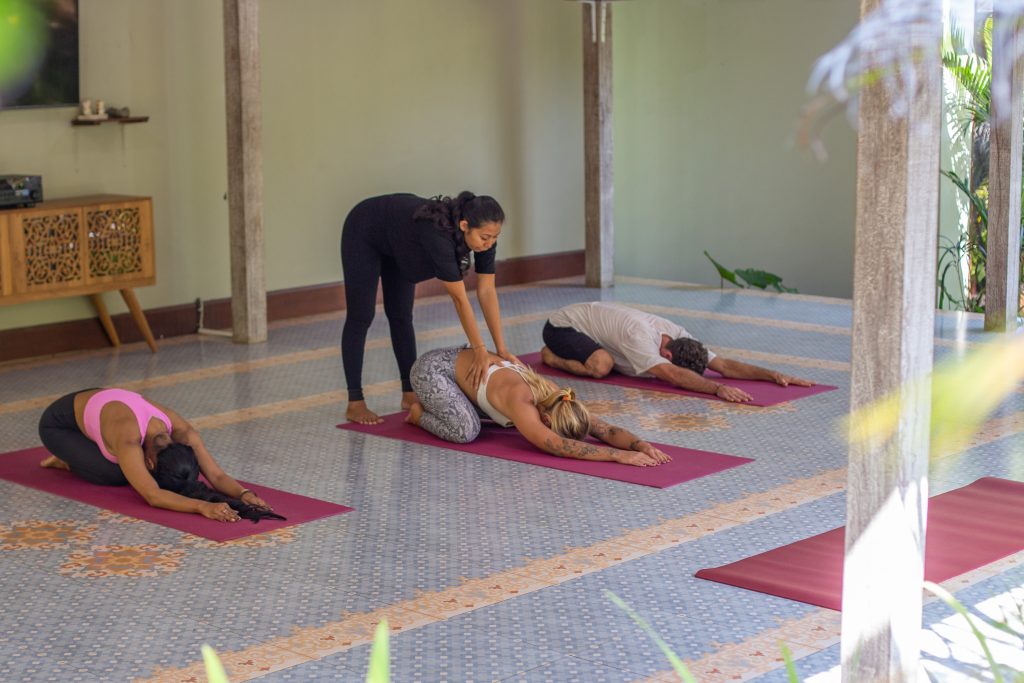
So how can you alleviate back pain?
There are many treatments out there, but have you considered yoga?
Yoga has become increasingly popular in recent years for its various health benefits, and its ability to help alleviate and prevent back pain.
Through its various poses and breathing techniques, yoga can strengthen and stretch the muscles, promote relaxation, and improve posture.
In this blog post, we will explore the different ways in which yoga can help with back pain, the types of yoga that are best for this purpose, as well as some specific poses you can try at home.
How Yoga Helps in Relieving Back Pain
When it comes to the benefits of yoga for back pain, the list is almost endless.
For starters, practicing yoga increases blood flow to the back, which can reduce discomfort and promote healing.
Additionally, certain poses can help improve the strength and flexibility of the spine, making it less prone to injury.
Finally, yoga has been shown to reduce stress and anxiety levels, which can exacerbate back pain.
Incorporating yoga into your daily routine may help alleviate back pain caused by a variety of factors, from poor posture to chronic conditions. Plus, the calming nature of yoga can help you achieve a mind-body connection that promotes overall well-being.
Whether you’re a seasoned yogi or just starting out, there are plenty of yoga styles and poses to choose from when it comes to back pain relief.
Consider trying out Iyengar yoga for its focus on alignment and props, or restorative yoga for its relaxing, supportive poses. Kundalini yoga and Hatha yoga are also great options that can help promote flexibility and relaxation.
Speaking of poses, certain asanas can do wonders for your back. Child’s Pose can gently stretch the lower back, while Downward-Facing Dog can help elongate the spine and relieve tension.
Cat-Cow Pose is a gentle way to warm up the spine, and Triangle Pose can help stretch out the sides of the body.
Finally, Bridge Pose can help strengthen the muscles in the lower back and glutes, which can help alleviate pain over time.
As with any physical activity, it’s essential to take precautions when practicing yoga for back pain. Always consult with a doctor before beginning your practice to ensure it’s safe for you.
And remember to listen to your body and avoid overexertion. Slow and steady wins the race when it comes to back pain relief.
Types of Yoga for Back Pain
When it comes to using yoga as a way to relieve your back pain, there are several types of yoga practices that can cater to your needs.
Iyengar Yoga is one such practice that emphasizes correct alignment and uses props to support your body while holding asanas.
Restorative Yoga, on the other hand, focuses on relaxing into poses, using various props such as blankets, bolsters, and straps.
Kundalini Yoga, which is more spiritual in nature, uses kriyas that consist of postures, breathwork, and meditation.
Finally, Hatha Yoga is a gentle form of yoga that concentrates on breathing exercises and asanas.
With these different types of yoga practices, there’s bound to be one that fits your needs and preferences. Remember, the goal is to find a practice that works for you and your body, not to force yourself into a certain type of yoga.
So why not give it a try and see how it can improve your back pain and overall well-being?
Yoga Poses for Back Pain Relief
Yoga can be one of the most effective ways to relieve back pain. Yoga helps to stretch and strengthen the muscles, improve flexibility, and promote proper alignment and posture.
Here are ten of the best yoga poses for back pain along with step-by-step instructions and explanations of their benefits:
Child’s Pose (Balasana)
Stretches the lower back, hips, and thighs, and releases tension in the spine.
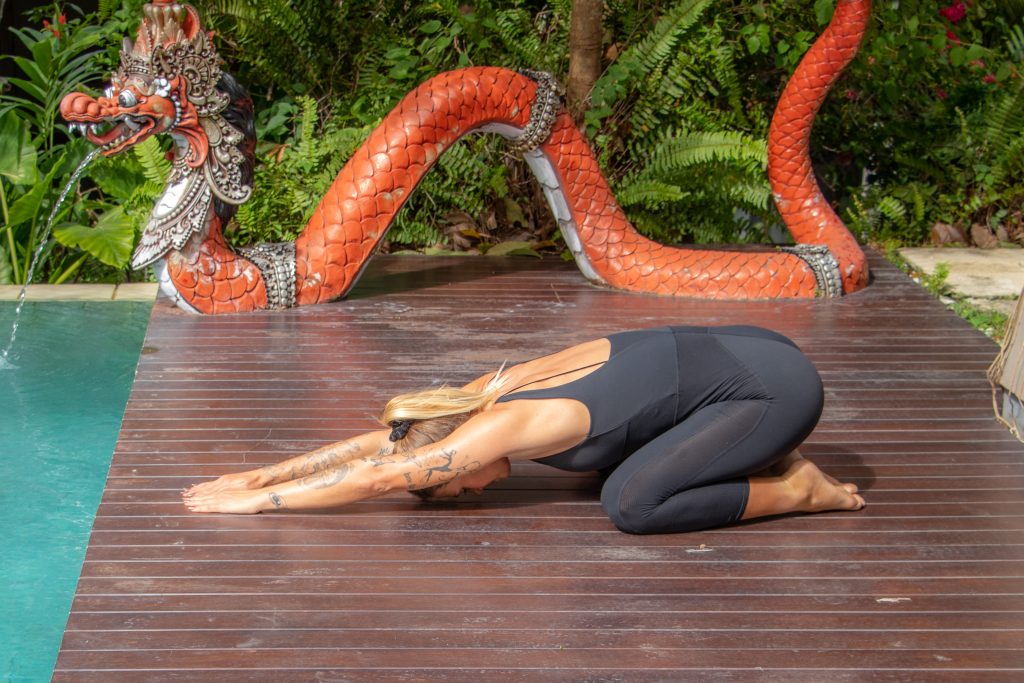
- Start on your hands and knees.
- Bring your buttocks back to rest on your heels while keeping your arms extended forward.
- Lower your chest towards the floor and rest your forehead on the mat.
- Relax your whole body and breathe deeply.
- Hold the pose for 1-3 minutes, or as long as comfortable.
Cat-Cow Pose (Marjaryasana/Bitilasana)
Promotes spinal mobility, stretches the back muscles, and relieves tension.
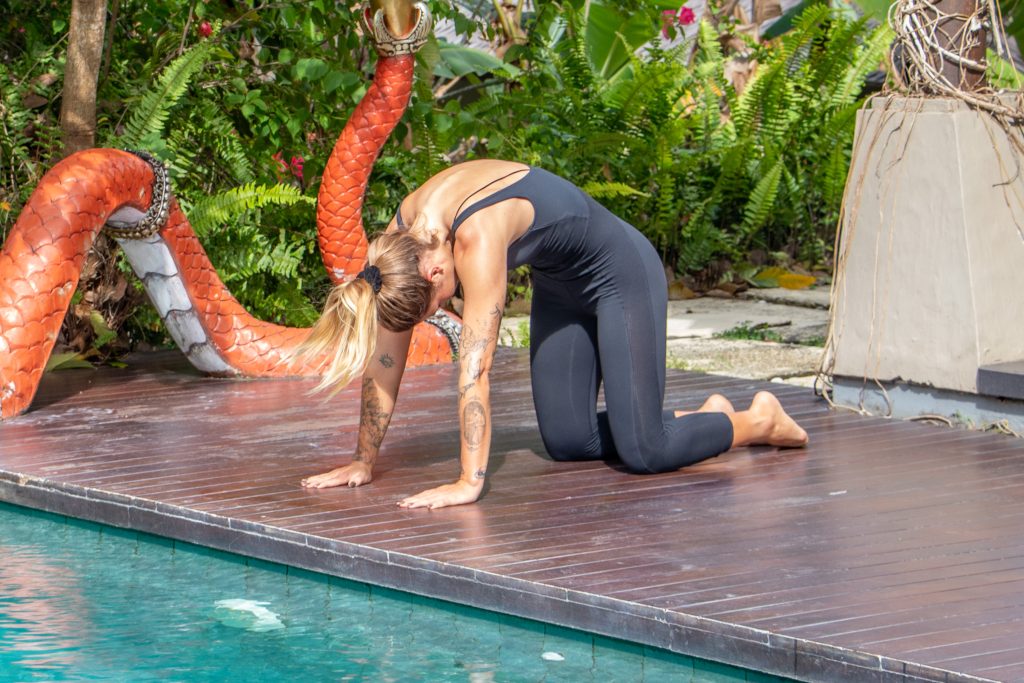
- Begin on your hands and knees in a tabletop position.
- Inhale and lift your chest and tailbone, arching your back into Cow Pose.
- Exhale and round your spine towards the ceiling, tucking your tailbone under in Cat Pose.
- Repeat this flowing movement, synchronizing it with your breath, for 5-10 cycles.
Downward-Facing Dog (Adho Mukha Svanasana)
Stretches the entire back, decompresses the spine, and strengthens the core.
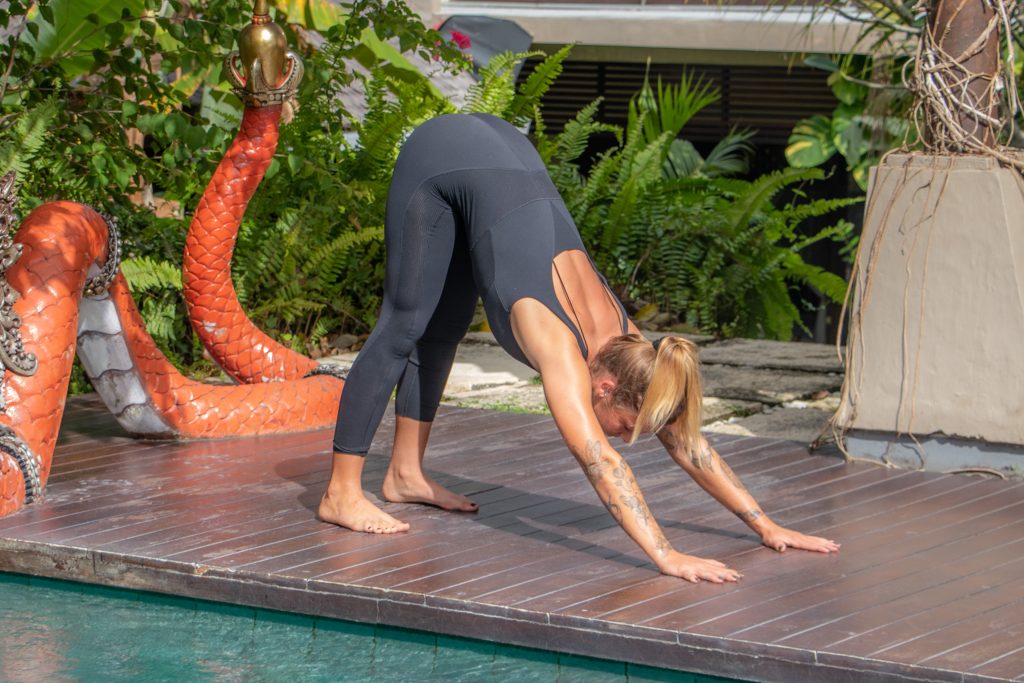
- Start on your hands and knees, then lift your hips up and back.
- Straighten your arms and legs, forming an inverted “V” shape with your body.
- Press your palms into the ground, lengthen your spine, and relax your neck.
- Engage your thigh muscles and press your heels toward the floor.
- Hold the pose for 5-10 breaths.
Cobra Pose (Bhujangasana)
Strengthens the back muscles, improves posture, and stretches the front body.
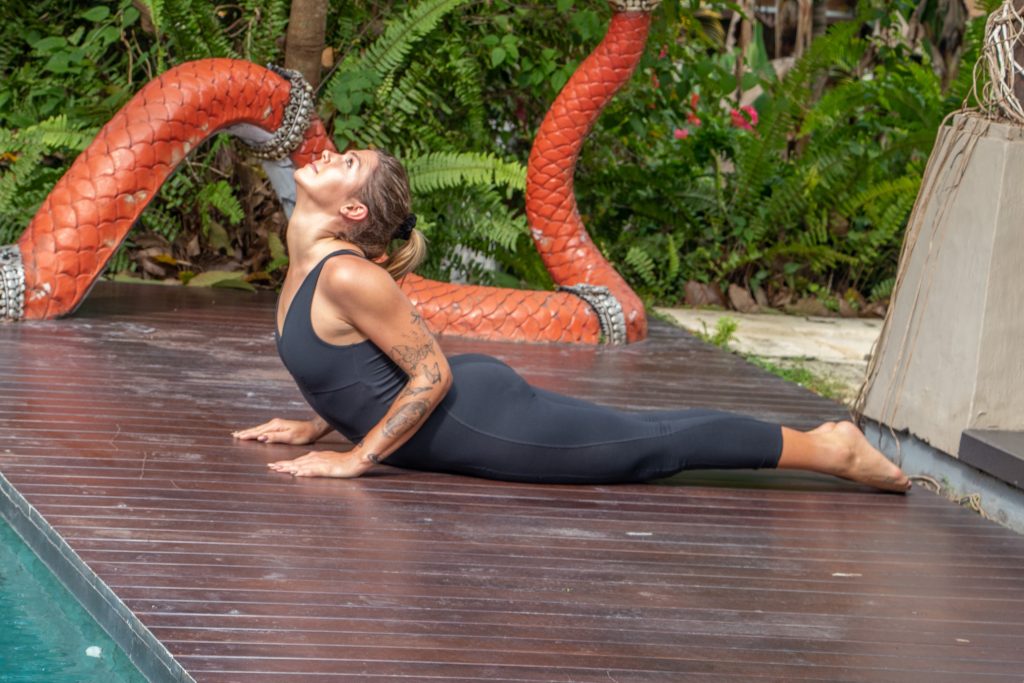
- Lie flat on your stomach with your legs extended and the tops of your feet on the floor.
- Place your palms next to your shoulders, fingers pointing forward.
- Press your palms into the floor and lift your chest and head, keeping your pelvis grounded.
- Draw your shoulders back and down, lengthening your neck.
- Hold the pose for 20-30 seconds while breathing deeply.
Bridge Pose (Setu Bandhasana)
Strengthens the back and glutes, stretches the chest, and promotes spinal flexibility.
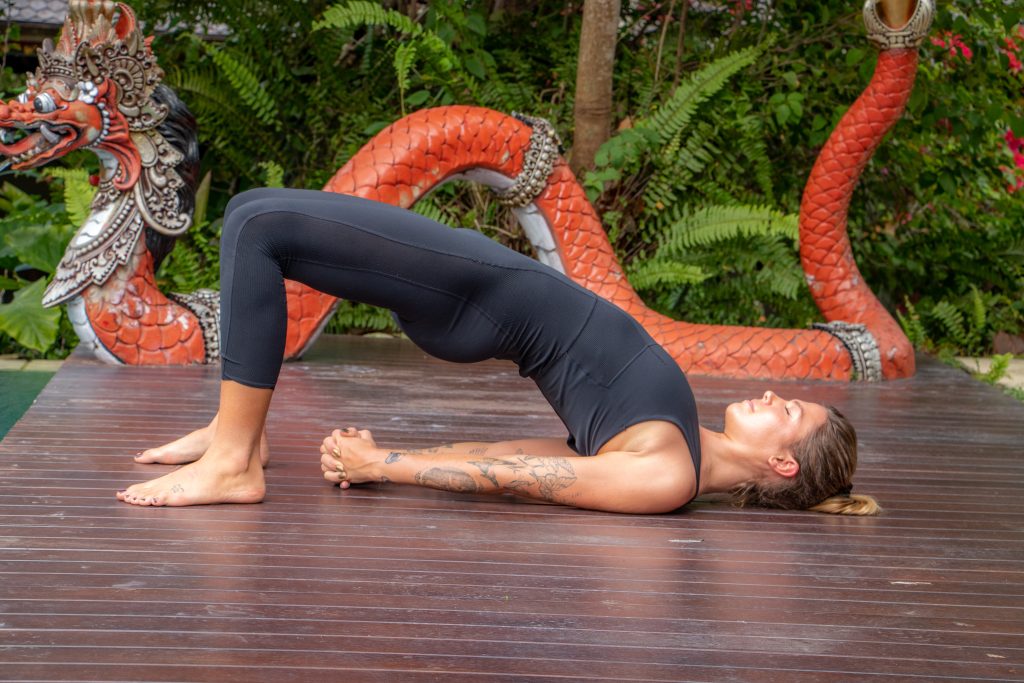
- Lie on your back with your knees bent and feet flat on the floor, hip-width apart.
- Place your arms by your sides, palms facing down.
- Press your feet and arms into the floor, lift your hips, and engage your glutes.
- Roll your shoulders back, interlace your fingers beneath you, and draw your shoulder blades together.
- Hold the pose for 30-60 seconds while breathing evenly.
Sphinx Pose (Salamba Bhujangasana)
Relieves lower back pain, strengthens the spine, and opens the chest and shoulders.
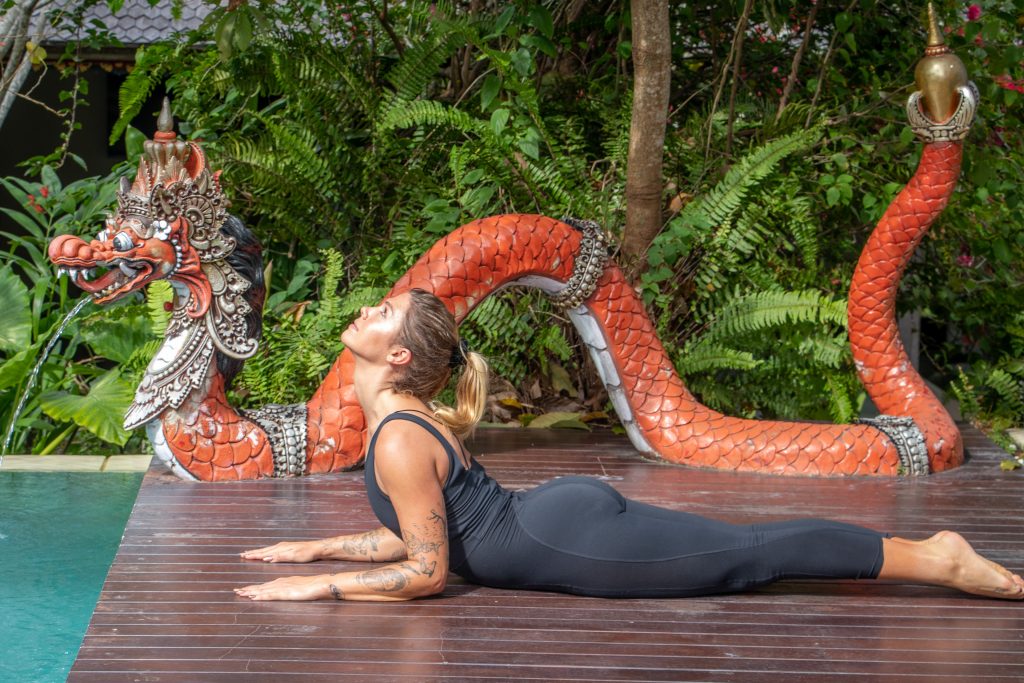
- Lie on your stomach with your legs extended and elbows under your shoulders.
- Press your forearms into the mat and lift your chest, keeping your hips grounded.
- Relax your shoulders, draw your shoulder blades down, and lengthen your neck.
- Hold the pose for 1-2 minutes while breathing deeply.
Pigeon Pose (Eka Pada Rajakapotasana)
Stretches the hip flexors, glutes, and piriformis muscles, and relieves tension in the lower back.
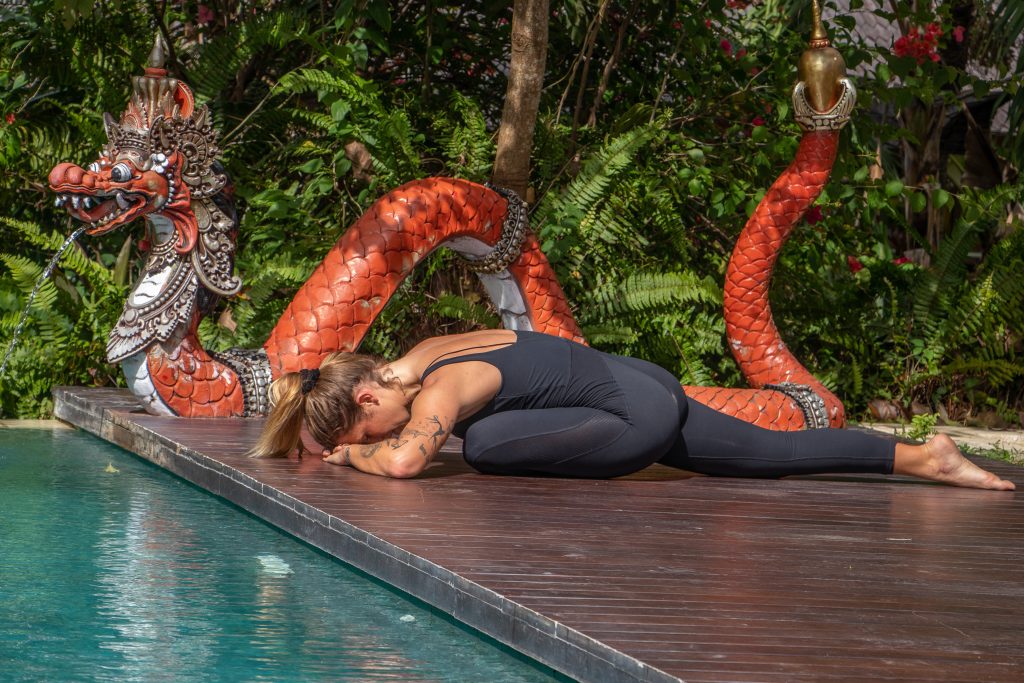
- Begin in a high plank position, then bring your right knee forward and place it behind your right wrist.
- Extend your left leg straight back, keeping your hips square.
- Slowly lower your upper body onto your forearms or to the floor, resting your forehead on your hands.
- Hold the pose for 1-2 minutes, then repeat on the other side.
Thread the Needle Pose (Parsva Balasana)
Releases tension in the upper back and shoulders and stretches the spine and neck.
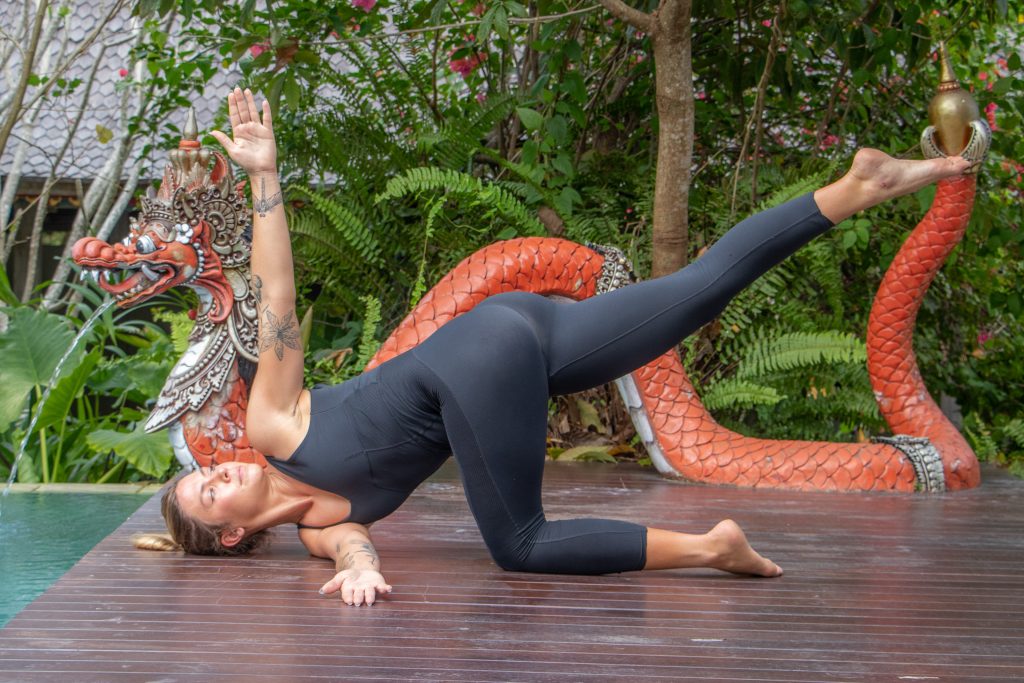
- Begin on your hands and knees in a tabletop position.
- Thread your right arm under your left arm, lowering your right shoulder and temple to the floor.
- Extend your left arm forward, pressing the back of your left hand into the mat.
- Keep your hips lifted and relax into the stretch.
- Hold the pose for 30 seconds to 1 minute, then switch sides.
Supine Twist (Supta Matsyendrasana)
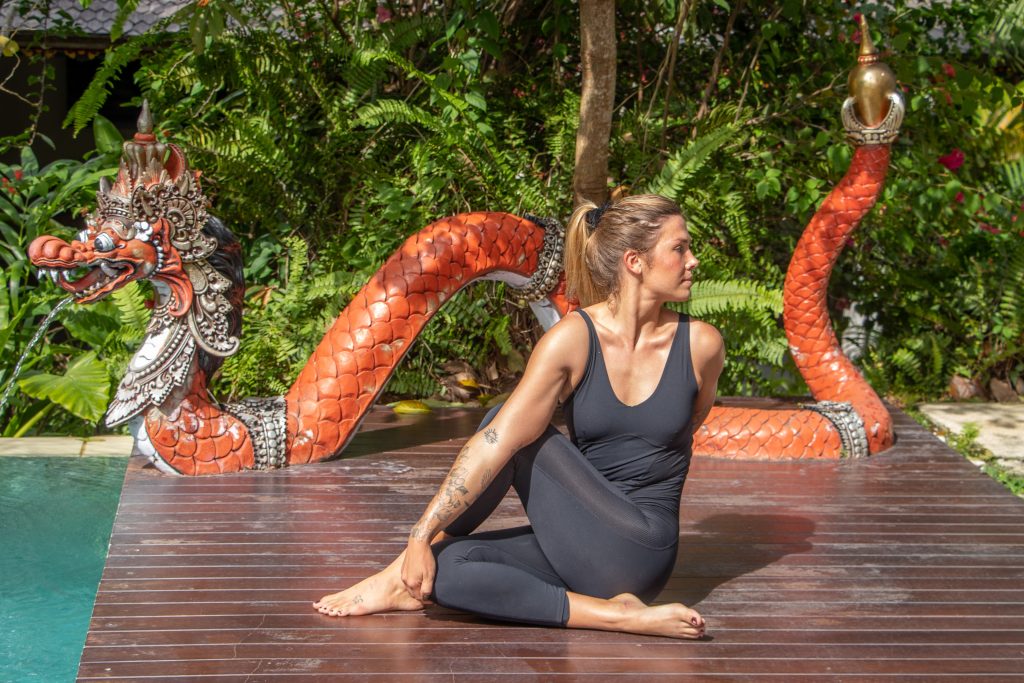
Relieves tension in the lower back, and stretches the spine and hips.
- Lie on your back with your knees bent and feet flat on the floor.
- Extend your arms out to the sides, forming a “T” shape.
- Drop both knees to the right side and keep your shoulders grounded.
- Turn your head to the left, and gaze towards your left hand.
- Hold the pose for 1-2 minutes, then repeat on the other side.
Legs-Up-The-Wall Pose (Viparita Karani)
Relieves lower back pain, reduces swelling in the legs, and promotes relaxation.
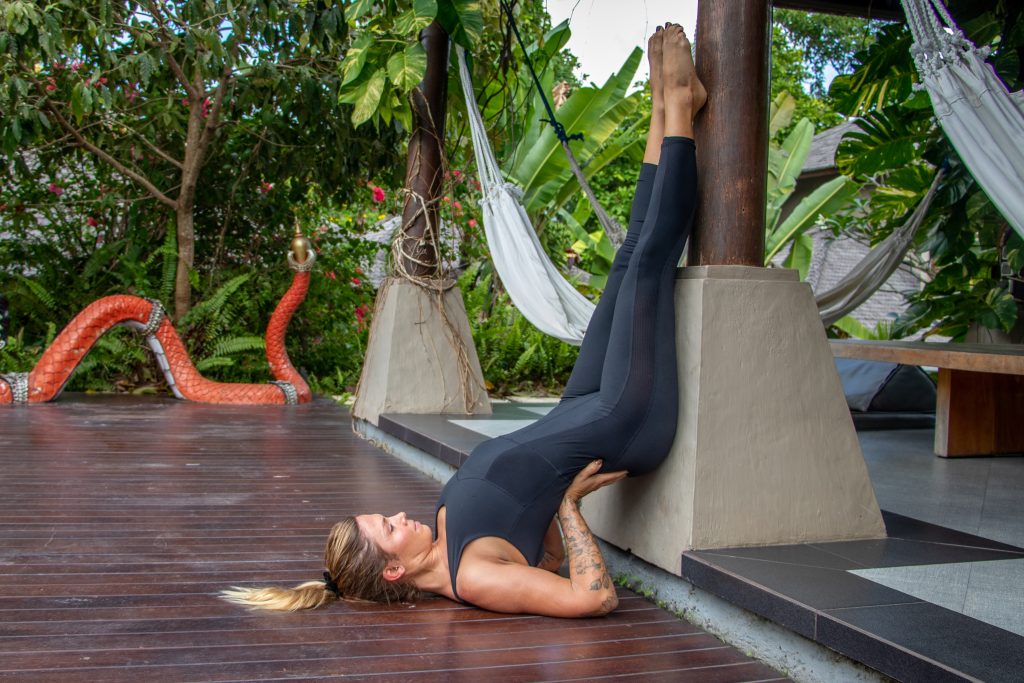
Instructions:
- Sit sideways against a wall, with one hip touching the wall.
- Lie back and swing your legs up the wall while shifting your weight and bringing your entire body parallel to the wall.
- Adjust your distance from the wall to find a comfortable stretch in your hamstrings and lower back.
- Keep your arms relaxed by your sides, palms facing up.
- Stay in this pose for 5-10 minutes, focusing on deep, relaxed breathing.
Remember to breathe deeply, listen to your body, and modify the poses as needed.
Start slowly and increase the duration and intensity of each pose as you become more comfortable.
Precautions to Take While Doing Yoga for Back Pain
You know that practicing yoga can do wonders for your body and mind.
But when it comes to practicing yoga for your back pain, there are a few precautions that need to be taken.
Firstly, it’s important to consult with a doctor before starting your practice. They can advise you on any poses to avoid or modify based on your specific condition.
Listening to your body is also crucial to avoid exacerbating any pain or injury. It’s okay to take breaks and make modifications during the practice.
Lastly, avoiding overexertion is key to preventing further damage to the back.
Remember, yoga is not a competition, it’s a practice. Yoga is about listening to your body and working with it, not against it.
So, be mindful, take it slow, and reap the benefits of a healthy body and mind.
Conclusion
As you know, yoga can work wonders for your back pain.
By promoting blood flow to your back, and enhancing your flexibility and strength, while reducing stress and anxiety levels, yoga can help relieve pain and discomfort.
The types of yoga you can try include Iyengar, Restorative, Kundalini, and Hatha.
Additionally, practicing certain yoga poses such as Child’s Pose, Downward-Facing Dog, Bridge Pose, and more can help to relieve your back pain.
Remember, before you start the practice, consult with a doctor and listen carefully to your body.
Start your yoga practice today to enjoy a pain-free life.
